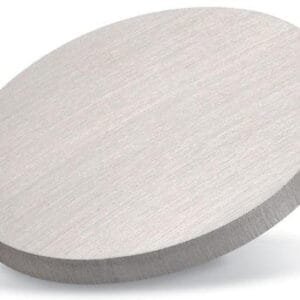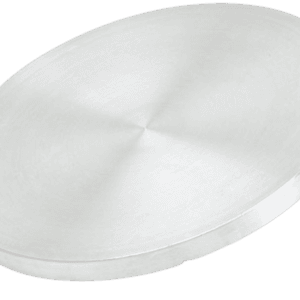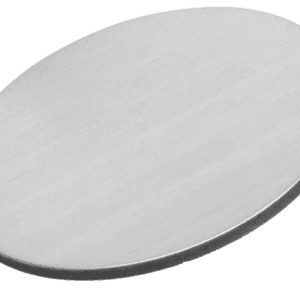Lithium Nickel Oxide Sputtering Target Description
Lithium Nickel Oxide Sputtering Target is a specialized material used in the sputter deposition process, which is essential for thin-film manufacturing and coating applications.
Sputtering is a technique where high-energy ions bombard a target material, causing atoms or molecules to be ejected. These ejected particles then deposit onto a substrate to form a thin film. Lithium Nickel Oxide (LiNiO2) is a compound composed of lithium, nickel, and oxygen. It is particularly valuable in producing cathode materials for lithium-ion batteries.
The sputtering process with Lithium Nickel Oxide Targets allows for precise control over the thin film’s deposition, making it crucial for applications in electronics, energy storage, and optics. This process ensures the creation of thin films with tailored properties and compositions for various industrial uses.
Related Product: Lithium Nickel Cobalt Oxide Sputtering Target
Lithium Nickel Oxide Sputtering Target Specifications
| Compound Formula | LiNiO2 |
| Molecular Weight | 97.63 |
| Appearance | Gray Target |
| Melting Point | >1000℃ |
| Density | – |
| Available Sizes | Dia.: 1.0″, 2.0″, 3.0″, 4.0″, 5.0″, 6.0″ Thick: 0.125″, 0.250″ |
Lithium Nickel Oxide Sputtering Target Handling Notes
Indium bonding is recommended for Lithium Nickel Oxide Sputtering Targets due to the material’s inherent characteristics that are less suited for traditional sputtering techniques. Lithium Nickel Oxide (LiNiO2) is known for its brittleness and low thermal conductivity, which can make it prone to thermal shock during the sputtering process. Indium bonding helps mitigate these issues by providing a more stable and reliable method for maintaining the integrity of the target during use.
Lithium Nickel Oxide Sputtering Target Application
Lithium Nickel Oxide Sputtering Target is widely utilized across various industries, including:
- Electronics: For manufacturing electronic components and devices.
- Energy Storage: In the production of cathode materials for lithium-ion batteries.
- Optics: For applications requiring specialized thin film coatings.
Lithium Nickel Oxide Sputtering Target Packaging
Our Lithium Nickel Oxide Sputtering Targets are meticulously handled during both storage and transportation to maintain their quality and ensure they arrive in their original condition.
Get Contact
TFM offers Lithium Nickel Oxide Sputtering Targets in various forms, purities, sizes, and prices. We specialize in high-purity thin film deposition materials with optimal density and minimal grain sizes, which are ideal for semiconductor, CVD, and PVD applications in display and optics. Contact Us for current pricing on sputtering targets and other deposition materials that are not listed.





Reviews
There are no reviews yet.